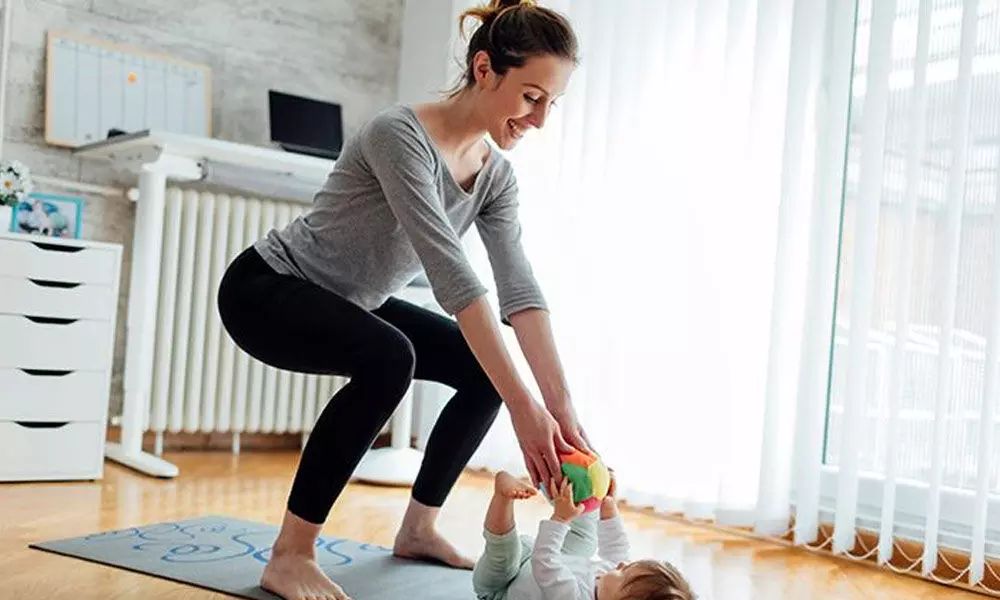Why do I still have a post-baby belly even after 1 year of giving birth?

Why do I still have a post-baby belly even after 1 year of giving birth?
The most common reason women struggle with a post-baby belly is due to a change that occurs during pregnancy and birth called diastasis recti
The most common reason women struggle with a post-baby belly is due to a change that occurs during pregnancy and birth called diastasis recti.
Diastasis recti is the partial or complete separation of the rectus abdominis, or "six-pack" muscles, which meet at the midline of your stomach. Diastasis recti is very common during and following pregnancy. This is because the uterus stretches the muscles in the abdomen to accommodate your growing baby. If left untreated, diastasis recti can potentially lead to poor core stabilisation, pelvic floor dysfunction, and back or pelvic pain. And of course that post-baby belly is what we see externally.
And no vigorously starting off with ab crunches, sit ups, planks or cardio is only going to make it worse. The key to healing diastasis recti is rebuilding your core from the inside out under the guidance of a postnatal specialist. You need to strengthen the transverse abdominis (TVA) muscle, which is the deepest abdominal muscle that can provide support for those muscles that have been stretched.
Medically speaking, a separation of two finger widths or more is considered a Diastasis Recti. But an interesting thing to note here is that you may have less than 2 finger width gap and still have loss of functionality of the core. So a flat stomach doesn't guarantee a strong and functional core. So the focus of any postnatal fitness program should not only be to improve the gap but also restore functionality of the core so that everyday tasks like walking, running, lifting or more intense activities like playing sports, hiking and gymming are safe and pain-free.
Another common reason can be losing function of pelvic floor. It's not as commonly discussed as diastasis recti is becoming, but still equally, if not more, important. The pelvic floor affects things like urination and the ability to hold your internal organs up and in.
But we women have been asked to do pelvic floor exercises right after delivery without even being aware of "where the pelvic floor muscles resides". And ofcourse the first thing we are told is do "kegels" right after we pop that baby. But is it effective? Can we do more.
The pelvic floor refers to a group of about 26 muscles that sit like a hammock or trampoline at the base of the pelvis. During pregnancy and while delivery(both vaginal and C sec) there is a lot of work done by these particular muscles resulting in loss of muscle tone, weakening and losing functionality, that can lead to feeling the need to pee all the time, urinary or fecal leaks, organ prolapsed and pain during sex. These are common but unfortunately not spoken about openly.
Good news is that this can be reversed but doing only "kegels" is not enough. Infact kegels only focus on squeezing the pelvic floor muscles, but not gaining control. In fact it can tighten the muscle which is a hindrance to recovery.
Here comes the neuvo "Connection Breath "technique which first focuses on being aware of our pelvic floor muscles and then through this technique learning to integrate the pelvic floor and the deep core muscles. It's essential to know not only how to contract these muscles but also to relax them. This technique which uses the concept of diaphragmatic breathing ( the diaphragm and pelvic floor is connected) is for life long.
The third reason for that post-baby pooch can be the posture change during pregnancy and the extra fat layer we may have added too. Plus the stress of being a new mom, lack of sleep and the extra calories that we need for feeding if you have chosen to is definitely adding to that belly fat. But please do show grace and patience for yourself. You have created a universe and that's no small feat. With proper postnatal specialised training, time and lifestyle changes we can definitely look forward to a body stronger than ever before. Mom Bod Strong!
(The writer is a Founder of MOM.BOD.STRONG & Ambassador of Zumba(R) Fitness India)

